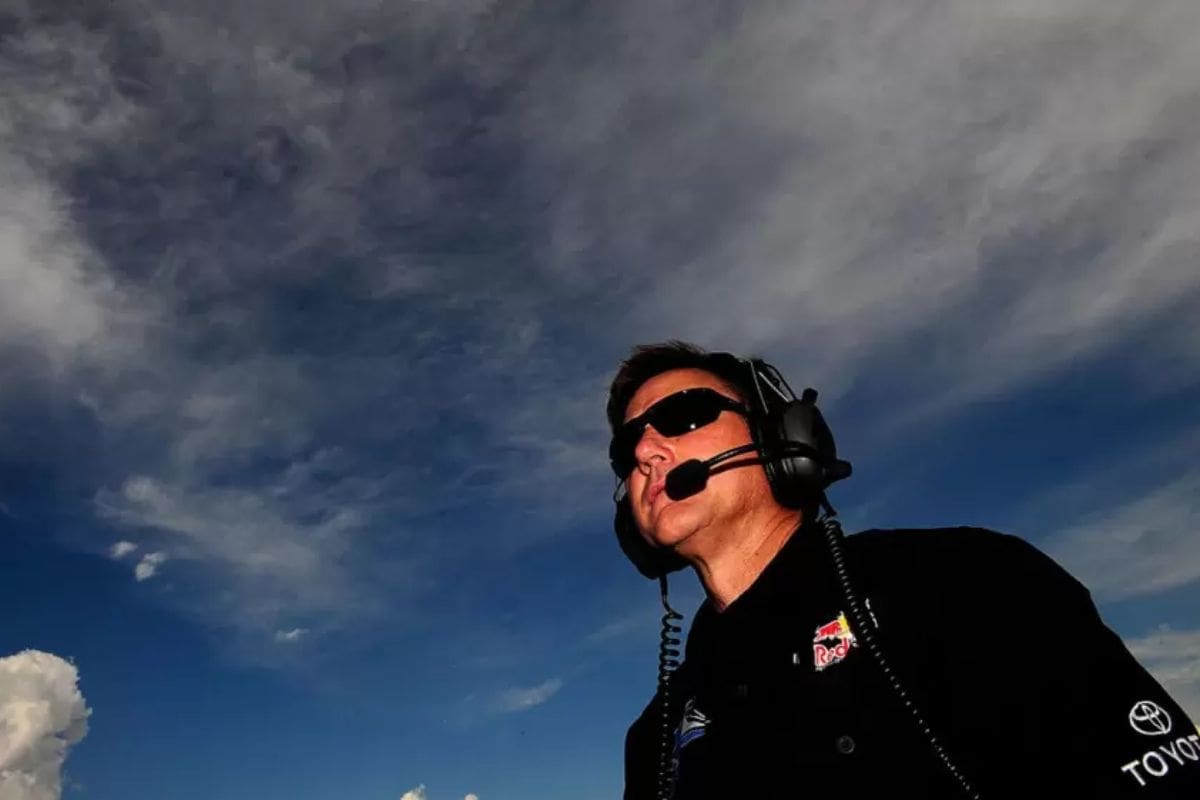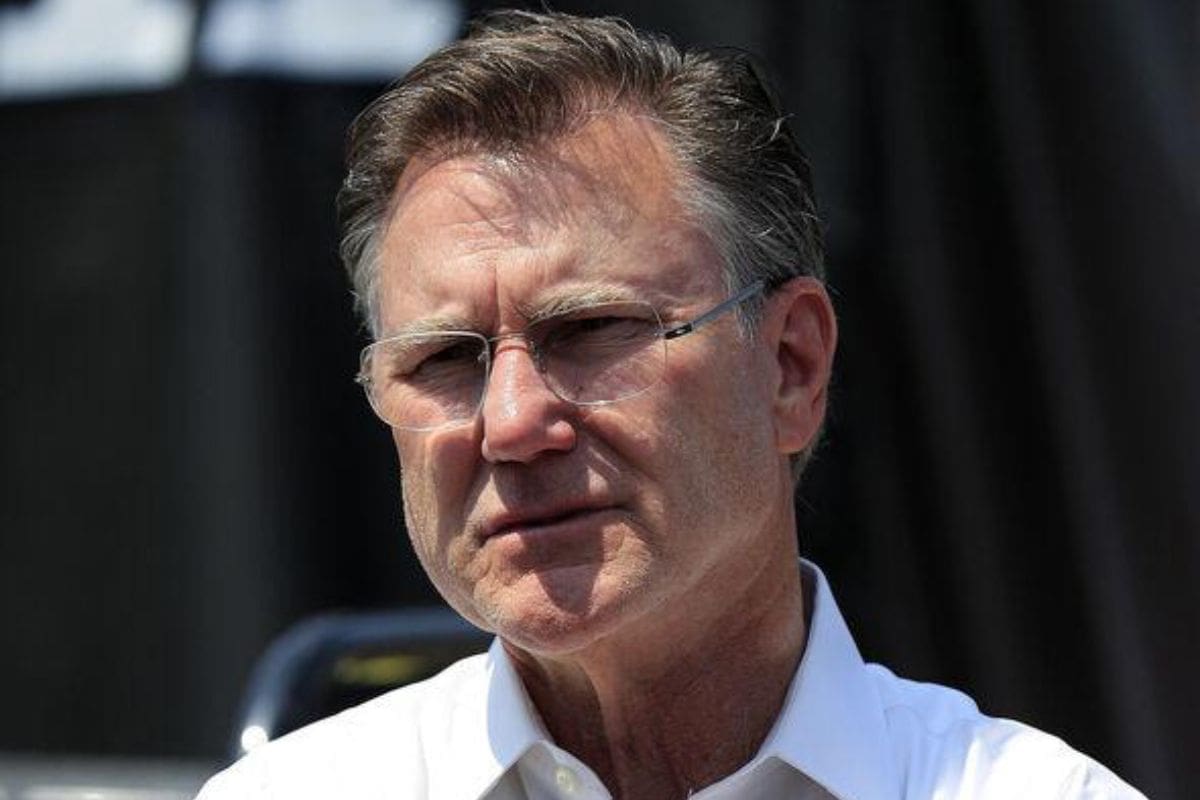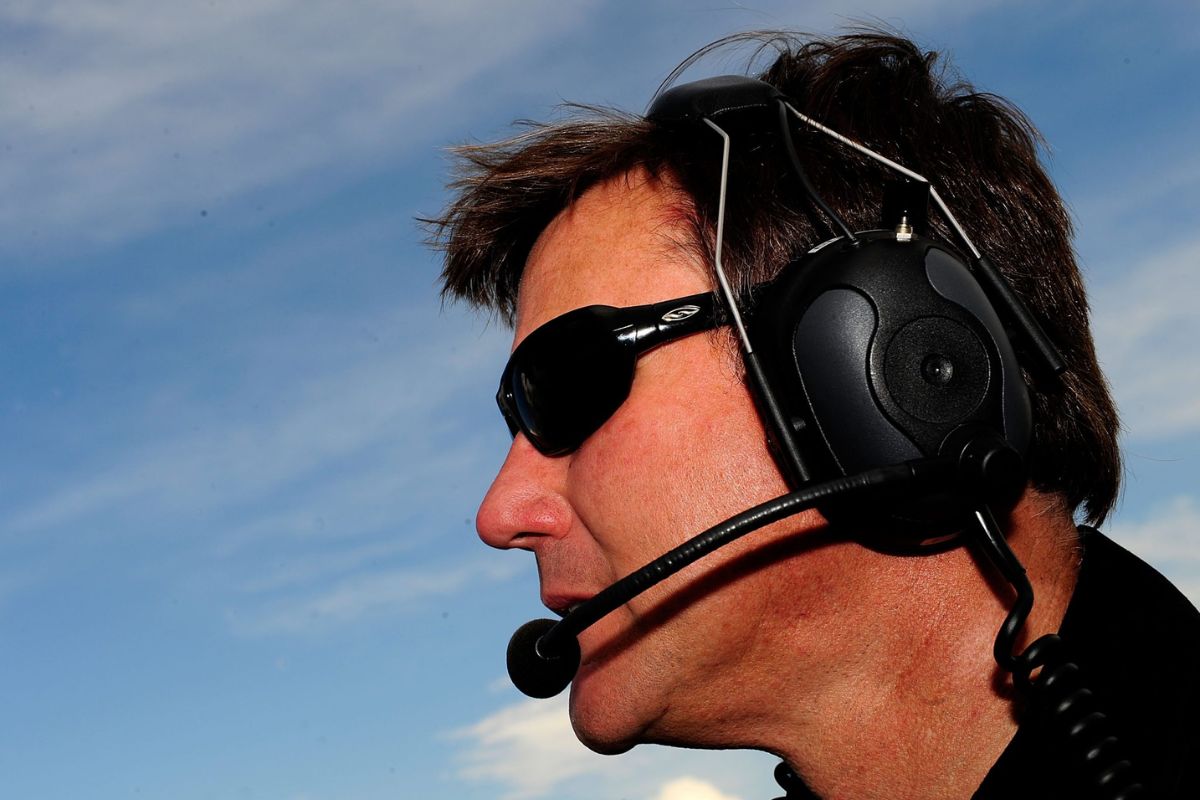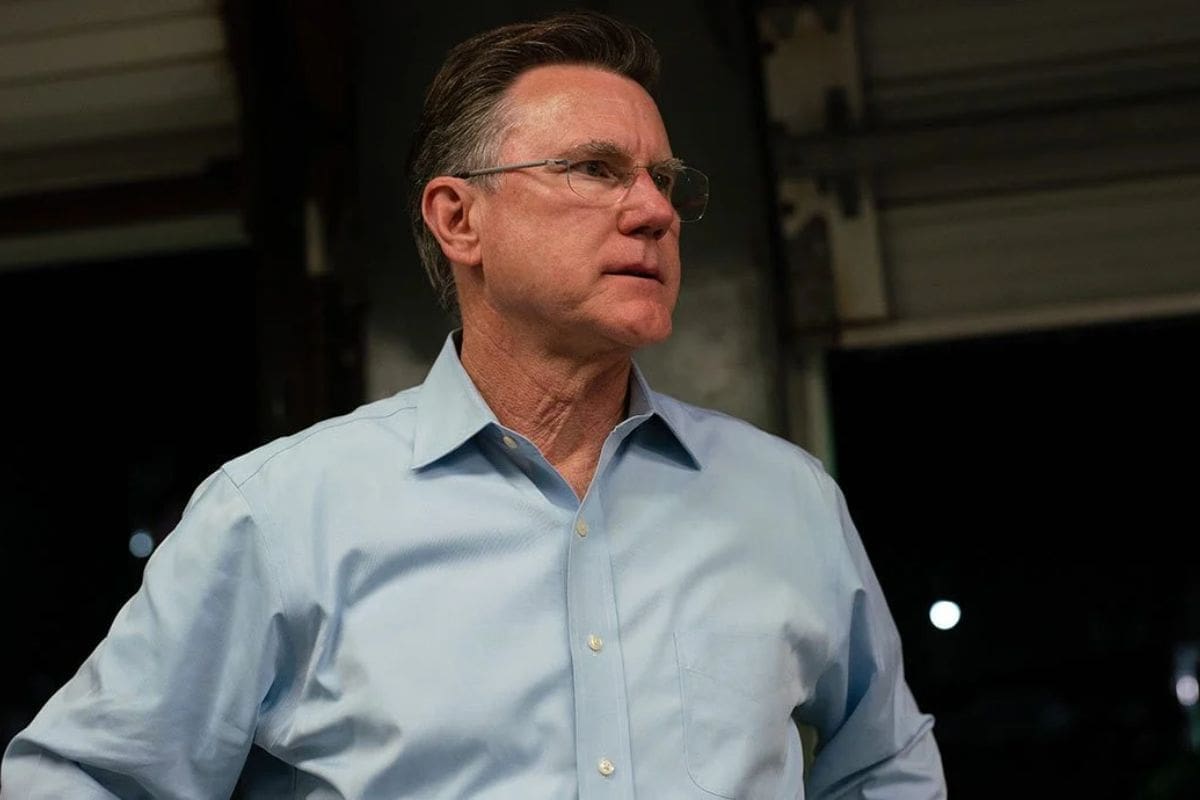Elton Sawyer Admits Ignorance: In a rare moment of candor, Elton Sawyer, NASCAR’s VP of Officiating, has openly admitted to the limitations faced by his team in forecasting the weather that led to the early termination of the Coca-Cola 600 at Charlotte Motor Speedway. Sawyer’s acknowledgment highlights the unpredictable nature of meteorological challenges in motorsport, despite rigorous monitoring and a steadfast commitment to safety. This incident not only raises questions about NASCAR’s preparedness but also invites a deeper examination of past races impacted by adverse weather conditions.
Key Highlights
- Elton Sawyer acknowledged the unprecedented weather conditions led to the early termination of the Coca-Cola 600 race.
- Sawyer emphasized that safety concerns were the primary reason behind NASCAR’s decision to end the race early.
- Challenges in track drying and a forecast of continuous rain influenced NASCAR’s decision to prioritize safety.
- NASCAR’s historical experience with rain-affected races guided the decision to avoid extended delays and logistics issues.
- The decision balanced safety, logistical concerns, and the impracticality of extending the race past 2 a.m.
NASCAR’s Decision to End the Coca-Cola 600 Race Early
NASCAR’s decision to end the Coca-Cola 600 race early came after a prolonged lightning delay and subsequent rainstorm, making it impossible to resume the race safely. The race, which took place at Charlotte Motor Speedway, was halted after completing just 249 of the scheduled 400 laps. The adverse weather conditions left officials with no viable option but to declare the race official, leading to Christopher Bell being crowned the winner.
The sequence of events began with a significant lightning delay, a standard safety procedure mandated by NASCAR to safeguard the well-being of drivers, teams, and spectators. This delay was compounded by a subsequent rainstorm, which saturated the track and created unsafe racing conditions. Given the severity and persistence of the weather, the possibility of resuming the race during the remaining hours of Sunday night became increasingly unlikely.
While NASCAR’s decision was rooted in safety concerns and operational constraints, it did not sit well with many fans. The sudden end of the race left a sense of unfinished business, particularly given the prestige and importance associated with the Coca-Cola 600. Some fans speculated that the race could have been resumed in the early hours of Monday, but the decision-makers prioritized safety and operational feasibility.

Elton Sawyer’s Explanation
Elton Sawyer, NASCAR’s Vice President of Officiating and Technical Inspection, addressed the decision to end the Coca-Cola 600 early by emphasizing the unprecedented weather conditions and the paramount importance of safety. Sawyer highlighted that the weather forecast predicted relentless rain, creating a scenario where completing the race on the same day became logistically untenable.
Sawyer explained that the safety of the drivers, crews, and fans remained the top priority. He emphasized that the track conditions were deemed hazardous, with the potential for aquaplaning and visibility issues posing significant risks. According to Sawyer, these adverse conditions necessitated an immediate and cautious response.
Moreover, Sawyer contended that while NASCAR has a history of managing races under challenging circumstances, the unique intensity and unpredictability of the weather during the Coca-Cola 600 warranted a different approach. He noted that lessons from past events, such as the 1980 race won by Benny Parsons despite multiple red flags, were considered; however, the current situation required prioritizing immediate safety over historical precedence.
The Reasoning Behind NASCAR’s Decision
The decision to call the race early was primarily influenced by the impracticality of drying the track and the projected timeline, which indicated that racing would extend well past 2 a.m., posing significant logistical and safety concerns for all involved.
According to Elton Sawyer, NASCAR had initially been committed to completing the Coca-Cola 600, despite adverse weather conditions. However, as Sawyer explained, the track failed to dry adequately, a critical factor in the decision-making process.
NASCAR officials evaluated both the timeline required to dry the track and the necessary number of laps left to complete the race. With 151 laps remaining, it became evident that continuing would push the event well into the early hours of the morning.
“We were up for it; we attempted to get the track dry, just wasn’t going to come in and as all that started unfolding and looking at the timelines, the amount of racing we needed to have to complete the race, 151 laps, we were looking well past 2 a.m. which just didn’t feel right for our competitors, our fans alike, and all the workers that had been there all day.” – Sawyer
This scenario was deemed untenable for several reasons. To start with, the extended timeline would impose undue strain on competitors, many of whom had already endured a long day. Moreover, the prolonged event would have significant implications for the fans, many of whom faced transportation and accommodation challenges.
Furthermore, the safety of all participants—including drivers, pit crews, track staff, and spectators—was a paramount consideration. Racing under suboptimal conditions, with fatigue setting in, would inherently increase the risk of accidents and injuries.
“Obviously, we have our air tunders, we have all the drying equipment there, and once it stopped and we could start the process, and then communicating with the folks on the ground who have great experience and done this for many years, they get a feel pretty quick of where we’re at.” – Sawyer

The Historical Context
Reflecting on historical precedents, previous rain-affected Coca-Cola 600 races have often encountered significant logistical challenges and diminished fan satisfaction. The Coca-Cola 600, known as one of NASCAR’s premier events, has not been immune to the unpredictable nature of weather. Rain interruptions have historically led to a wide range of issues, ranging from delayed race completions to reduced spectator engagement and operational complications.
Historically, NASCAR’s decisions to either delay or extend the race have often been met with mixed results. Rain delays force the organization to juggle schedules, manage track conditions, and ensure the safety of drivers and crew, all while maintaining the integrity of the competition. These complications not only test the resilience of the teams and their strategies but also impact the entire experience of the fans, both at the track and those tuning in from home.
- Logistical Difficulties: Rescheduling races often requires coordination with different stakeholders, including broadcasters, teams, and sponsors.
- Fan Dissatisfaction: Extended delays or postponements can lead to frustration among spectators who have invested time and resources to attend the event.
- Safety Concerns: Wet track conditions increase the risk of accidents, necessitating stringent safety protocols and prolonging race delays.
- Economic Impact: Postponements can result in financial losses for the organizers, local businesses, and vendors reliant on race-day revenues.
- Operational Strain: Extended race weekends can strain resources, including personnel and equipment, affecting the overall efficiency of the event.
Past Rain-Affected Races
Examining specific instances of past rain-affected Coca-Cola 600 races reveals the crucial interplay between weather disruptions and NASCAR’s adaptive strategies. Historically, the Coca-Cola 600, one of NASCAR’s premier events, has faced significant challenges due to inclement weather, necessitating swift and sometimes creative responses from the governing body.
One notable instance occurred in 1980 when rain threatened to derail the race. NASCAR’s quick decision to delay proceedings ultimately proved advantageous. The race resumed after the weather cleared, allowing for a full, competitive event that met both fan and stakeholder expectations.
Conversely, the 2009 Coca-Cola 600 highlighted the unpredictable nature of weather-related interruptions. Scheduled for Sunday, May 24, the race was plagued by persistent rain, forcing NASCAR to postpone it to the following day. This decision to race on Monday exemplified NASCAR’s flexibility and commitment to ensuring a safe and fair competition.
The Monday race, although not ideal for all stakeholders, demonstrated NASCAR’s ability to adapt to adverse conditions and maintain the integrity of the event. The area around the racetrack received 1.33 inches of rain, prompting NASCAR to officially end the race after only 227 laps.
While some rain-affected races, like in 1980, have resulted in minimal disruption, others, such as the 2009 race, have required more substantial adjustments. These adaptive strategies are crucial, as they demonstrate NASCAR’s resilience and operational agility in the face of unpredictable weather patterns.

News in Brief: Elton Sawyer Admits Ignorance
The unexpected weather conditions that highlighted the inherent unpredictability of meteorological factors in motorsport events, resulting in the premature end of the Coca-Cola 600 race at Charlotte Motor Speedway, emphasize the importance of Elton Sawyer’s recognition of the limitations in forecasting such events.
NASCAR’s dedication to transparency and continuous improvement is underscored by his acknowledgment. Reviewing previous rain-affected races offers additional insight, underscoring the necessity for adaptive strategies to improve safety and decision-making processes when faced with unforeseen weather challenges.
Our Reader’s Queries
Q. Did Elton Sawyer ever race in NASCAR?
A. Sawyer kicked off his NASCAR journey in the Busch Series, making sporadic appearances in 1983, 1984, and 1985. Despite managing his own team, he notched an impressive tally of 8 top-ten finishes during this period. Subsequently, from 1986 to 1989, Sawyer committed to full-time campaigns with Lewis Motorsports, solidifying his presence in the series.
Q. Who is Elton Sawyer married to?
A. Sawyer, wedded to former NASCAR driver Patty Moise, entered the NASCAR realm in 2015, assuming the role of managing director for the truck series.
ALSO READ: Elton Sawyer calls Rick Hendrick Persuasive: Insights into Struggles of a Racing Director

